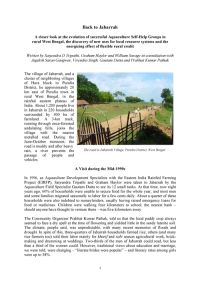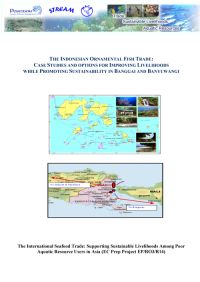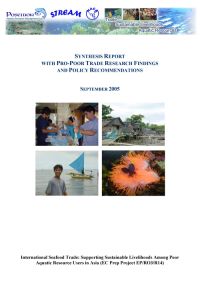Any pond can be used to grow fish, but a pond that is dug specially for fish culture usually has a regular shape, a flat bottom with a slight slope along its length. When deciding where to locate a new pond, you should consider the landscape, land use, soil texture (15% clay is best for pond construction and water holding), water supply (consider quality, quantity and seasonality), security (from theft) and convenience (maybe close to your house).
This report provides insight into the status of the marine ornamental fish trade in Indonesia, including policy environment, collection, chain of custody, distribution channels, markets and constraints. The report also reviews the livelihoods of poor stakeholders in market chains including economic and financial aspects, natural and physical resources, livelihood patterns, social structures. The report provides recommendations for policy makers and stakeholders in improving the livelihoods of poor stakeholders in marine ornamental fish collection and market chains.
This report provides insight into the status of the shrimp trade in Vietnam, including policy environment, export capacity, production chain, distribution channels, markets and constraints. The report also reviews the livelihoods of poor stakeholders, including women, in shrimp market chains from input service supply, seed and broodstock supply, grow out, trade and processing. The report provides recommendations for policy makers and stakeholders in improving the livelihoods of poor stakeholders in shrimp market chains.
The purpose of the project was to investigate international trade in fisheries products and its relationship to poverty alleviation and livelihoods of poor aquatic resource users in developing countries in Asia, and to identify options to improve the effectiveness of poverty reduction through international seafood trade. The project directly addressed the EC-PREP priority area of trade and development, and indirectly provided valuable insight to two other priority areas: food security and sustainable rural development; and institutional capacity building.




